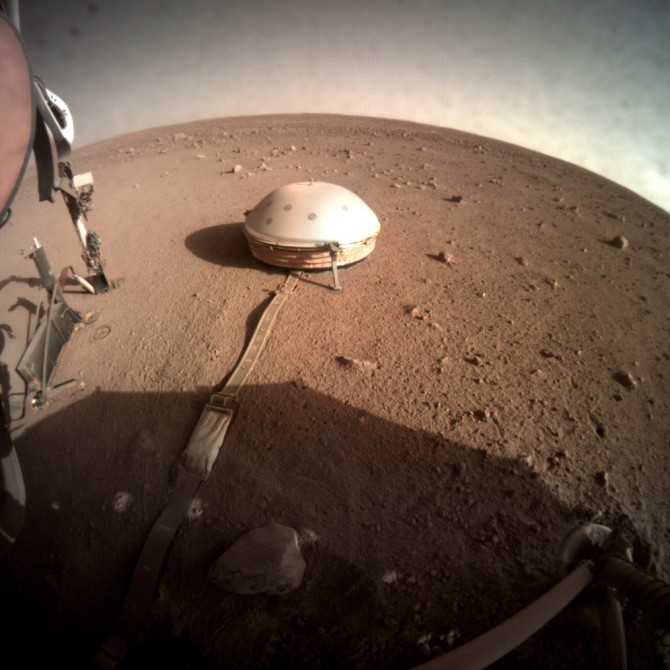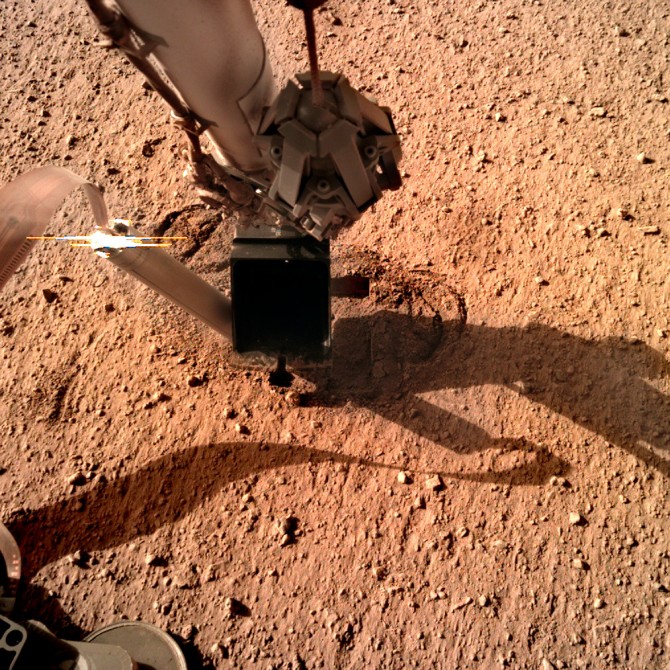InSight detects gravity waves, low rumbles and devilish dust
By Blaine Friedlander
More than a year after NASA’s Mars InSight lander touched down in a pebble-filled crater on the Martian equator, the rusty red planet is now serving up its meteorological secrets: Gravity waves, surface swirling “dust devils,” and the steady, low rumble of infrasound, Cornell and other researchers have found.
“This is entirely new territory we are exploring,” said Don Banfield ‘87, principal research scientist and the science lead for the Auxiliary Payload Sensor Suite, or APSS, aboard InSight.
The Cornell-led research was published Feb. 24 in Nature Geoscience.
While other scientists studying the stationary Martian lander explore what lies beneath the planet’s surface, the APSS team keeps track of the meteorology above.
InSight touched down on Nov. 18, 2018, at Homestead Hollow, itself a formidable weather environment. The high temperature Friday, Feb. 21, was 9 degrees Fahrenheit, with a low of -139 degrees F, and strong westerly winds blowing up to 53 miles per hour. (Click here for the latest Mars Weather.)
Mars experiences strong daily pressure and temperature fluctuations, “stronger than on Earth,” Banfield said. “The atmosphere is so thin that it can heat up and cool down much faster than on Earth.”
About a month after landing, InSight endured a large dust storm, which is a periodic global event on Mars that can dramatically change the planet’s weather and climate. The scientists also noted daily changing winds controlled by the seasonal freezing and thawing of the carbon dioxide in the polar caps.
The craft features a seismometer for detecting Mars’ quakes; sensors for gauging wind and air pressure; a magnetometer for measuring the planet’s magnetic forces; and a probe designed to take the planet’s temperature.
Banfield and the meteorology team were surprised that their sensors detected gravity waves, which are buoyancy oscillations of air parcels. Such waves on Earth can create linear rows of rolled “morning glory” clouds – white, puffy clouds that look like lofty jelly rolls. “We’re still working to understand what these waves can teach us about Mars,” Banfield said.
Banfield and his colleagues have noted “infrasound” – pressure oscillations below 10 Hertz, found by the lander’s sensors. It is a low rumbling below what the human ear can detect.
“We expected infrasound would exist, but this is the first direct measurement,” Banfield said. “It’s still mysterious as to exactly what causes the signals we’ve heard, but we’ll keep studying.”
During the Martian daytime, the APSS team has found convective vortices, better known as “dust devils” – small whirlwinds forming into tiny tornadoes, caused by wind shear and convection near the surface. Earth has dust devils, too, formed from dust and sometimes even snow. Banfield said these may be the cause of the Mars’ constant dustiness.
“We have seen the pressure signature of thousands of dust devils, and we have tried to take images at the right times of day,” Banfield said. “We’ve caught absolutely no dust devils on camera. Other landers have more effortlessly imaged dust devils, so it’s surprising that we haven’t even captured an image of one.”
In addition to Banfield, the research, “The Atmosphere of Mars as Observed by Insight,” was co-led by Aymeric Spiga of Sorbonne University, France, and authored by several dozen scientists.
Media Contact
Get Cornell news delivered right to your inbox.
Subscribe


